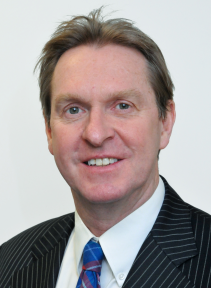 In simple supply and demand terms, there are now more people living with chronic disease than there are doctors and other professionals around to help them. So how can the practice of medicine respond to this particular challenge?
In simple supply and demand terms, there are now more people living with chronic disease than there are doctors and other professionals around to help them. So how can the practice of medicine respond to this particular challenge?
Here in the United States, there is growing interest in exploring the potential value of shared medical appointments, whereby a group of individuals with the same underlying long term condition are seen in the same room by a physician (albeit for much longer appointments than the traditional 8-10 minutes twice a year).
This is different from more straightforward structured group education programs, where there is a great deal of evidence that a group approach is more effective as well as efficient. With shared medical appointments the conversations are shared, as are individual data, such as blood pressure and weight, with the added potential of peer support (and pressure) delivering the holy grail of meaningful behavior change. This new “patient experience” could provide more value compared with the increasingly rushed medical visit that is commonplace today.
Clearly shared medical visits are not appropriate for every scenario, especially for some acute illnesses and when breaking bad news. Nevertheless, sharing an appointment with fellow patients might be of particular value for groups such as cancer survivors, for post-surgery follow-up visits, and also perhaps for minority populations where timely and appropriate access to care at an individual level can be challenging.
With a shared group appointment, the role of the doctor is more as a group facilitator, albeit with the caveat that one on one discussions are still on offer. Running group appointments will also require particular expertise in clinical observation and interpretation of “body language” and conversation content if serious medical problems are not to be missed.
There are many negatives to this approach including lack of privacy, a perception that this is all about just saving money, and the complex psycho-social issues around group dynamics and how each member of the herd behaves. Although embarrassment about bodily functions and intimate matters may be of potential concern, the nowadays bare all Facebook generation and the popularity of medical reality television suggests otherwise.
The “third way” of delivering care for people with long term medical conditions, which is growing in popularity, is the use of a smartphone application to collect personal data and to pull in data from devices, such as blood glucose meters or activity monitors. This is supported by a lifestyle “coach” who is in contact via email, text messaging, and the occasional telephone call. At the moment this is especially gaining traction with employers who pay for the health insurance of their employees and therefore have a vested interest in their wellbeing—both to maintain productivity and reduce costs.
In the near future, by adding together the potential value of digital medicines to date and time stamp when a medicine is taken and wearable sensors to record the physiological changes (and side effects) associated with the drug, the application of robotic surgery, and big data analytics to make diagnoses, then clinical practice as we know it may soon become unrecognizable. Doctors of the future may be chosen based not on traditional subjects learnt at school, but on qualifications in engineering and computer science.
It could be argued that group medical appointments and the use of smartphones are simply reflections of “dumbed down” medicine. Communication between professionals and patients could soon be reduced to an 140 character tweet, a series of emojis, or Snapchats, with the need for remembering multiple causes of finger clubbing or atrial fibrillation unnecessary, as all wisdom can be obtained with a Google search. The classically trained physicians of old may soon be turning in their graves.
David Kerr wears many hats—physician; editor of Diabetes Digest; and founder of DiabetesTravel.org, a free service for travellers with diabetes, and Excarbs.com, which focuses on exercise and insulin. He is director of research and innovation at the William Sansum Diabetes Center in Santa Barbara, California, and mHealth lead for the Diabetes Technology Society (unpaid). You can follow him on Twitter (@GoDiabetesMD).
Competing interests: The author has no relevant competing interests to declare.
